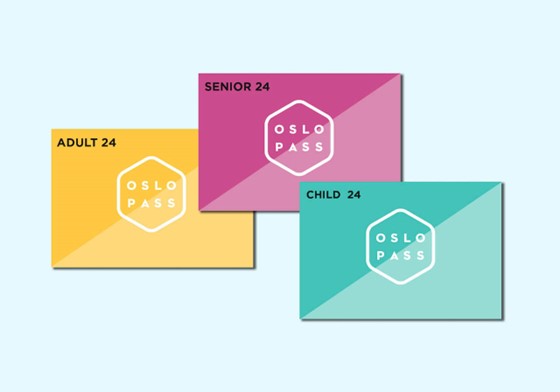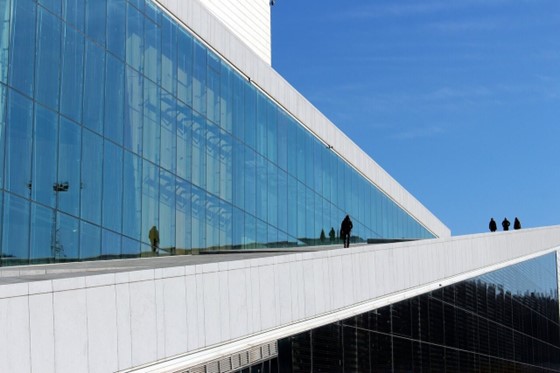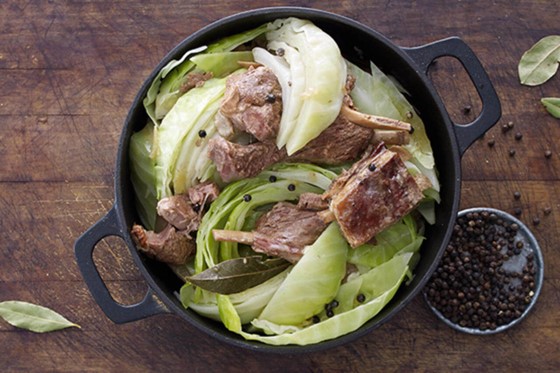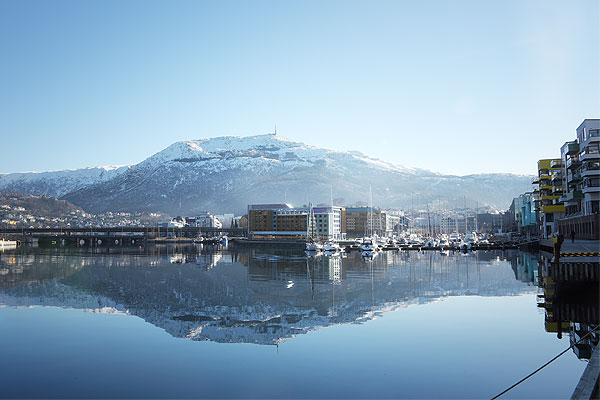espite the high cost of living, the quality of life and experiences offered by Oslo are unquestionably worth it.
1. Introduction
The question: “Is Oslo worth visiting?”
When planning a trip to Scandinavia, many tourists wonder: “Is Oslo worth visiting?” Norway’s capital city may not be as globally recognized as other European cities, but it certainly holds its own unique charm and attractions.
The city is a fascinating mix of lush nature and contemporary urban life, with a rich history and culture that is reflected in its beautiful architecture, vibrant arts scene, and gastronomy. Despite the high cost of living, the quality of life and experiences offered by Oslo are unquestionably worth it. But, don’t take our word for it, discover it for yourself.
What to expect from this article
In this comprehensive guide, we will dive into the many aspects of Oslo that make it a worthy destination for any traveler. From its rich history and cultural significance to practical information for navigating the city, we’ll give you an in-depth understanding of what Oslo has to offer. We’ll explore the city’s hidden gems, local cuisine, shopping, and art scene, and provide tips for getting around, including insights into car rental in Oslo.
Moreover, you’ll find practical tips and details such as the best time to visit, local customs, and cost considerations. We’ll also include suggestions on extending your journey beyond the city limits, hinting at the beauty of Tromsø, another Norwegian city worth considering.
Whether you’re a solo backpacker, a culture enthusiast, or planning a family trip, this guide will help you answer the question: “Is Oslo worth visiting?”. So sit back, grab a cup of coffee, and let’s explore Norway’s capital together!
2. Overview of Oslo
Brief history of Oslo
Oslo, originally known as Ánslo during its founding in 1040 AD, has had an eventful history. It was established by King Harald Hardrada at the end of the Viking Age. Over the centuries, Oslo has faced numerous adversities, including several fires that ravaged the city. After one particularly devastating fire in 1624, King Christian IV of Denmark (Norway was then under Danish rule) decided to rebuild the city under the name Christiania. The city retained this name until 1925 when it was renamed Oslo. An interesting note is that the old medieval city was not entirely replaced, and it exists today as the Old Town, or Gamlebyen.
Oslo’s strategic location on the Oslo Fjord, which opens onto the Baltic Sea, has played a significant role in its development as a major maritime nation. Its shipbuilding industry thrived, leading to an age of exploration and expansion during the Viking Age. Today, the city’s history is proudly displayed at the Viking Ship Museum, where you can see some of the world’s best-preserved Viking ships.
The cultural significance of Oslo
The cultural scene of Oslo is a compelling blend of old and new. One can see this coexistence of eras in the city’s architecture. From the grandeur of the 14th-century Akershus Fortress and the iconic 19th-century Royal Palace, to the modern and innovative design of the Oslo Opera House, the cityscape tells a story of a country that values its history while embracing the future.
Oslo is home to more than 50 museums, showcasing Norwegian culture and international interests. The Munch Museumhouses the largest collection of works by the renowned artist Edvard Munch, including the famous “The Scream.” Additionally, the Fram Museum offers insight into the nation’s significant polar exploration history.
The city is also a vital hub for Scandinavian literature, housing the National Library of Norway. Oslo has the honor of hosting the Nobel Peace Prize ceremony annually at the Nobel Peace Center. The city’s literary and artistic life, coupled with its position as a center for diplomacy and peace, underscores the significant cultural role Oslo plays on the international stage.
3. Getting around Oslo: Transportation guide

Public transportation in Oslo
Navigating Oslo is straightforward thanks to its efficient public transportation system. The Ruter oversees the city’s buses, trams, ferries, and metro services, which provide convenient ways to travel around. A single ticket can be used across all public transport systems, making it easy for visitors to explore different areas of the city. Consider purchasing the Oslo Pass, which offers unlimited travel on public transportation, free entry to museums, and various other benefits.
The metro system, known as the T-bane, operates six lines that cover the city and extend to the suburbs. Buses are frequent, and tram routes primarily serve the city center. For a scenic commute, you can take a ferry across the Oslo Fjord. The public transportation services in Oslo are reliable, punctual, and known for their cleanliness, making getting around the city a breeze for visitors.
The convenience of car rental in Oslo
While public transportation is efficient, renting a car in Oslo offers its unique advantages. It provides you with the freedom to explore at your own pace and the flexibility to visit places public transport doesn’t easily reach.
There are several reputable car rental services at Oslo Airport making it easy to start your Norwegian adventure as soon as you land. Bear in mind that driving in Oslo involves toll charges, and parking can be pricey within the city center. However, the convenience and flexibility a car offers might outweigh these considerations.
Driving in Norway also opens up opportunities for day trips or longer excursions to beautiful nearby areas like the Oslofjord region, the historic town of Fredrikstad, or the picturesque city of Drammen. Keep in mind that Norway has strict driving rules and the conditions can be challenging in winter, so always stay safe.
Tips for navigating the city
Oslo is a walkable city with most attractions located within a comfortable distance. Signages are clear, and maps are readily available online and at tourist information centers. In addition to walking, biking is a popular way to get around. Oslo has a city bike scheme, Oslo City Bike, where you can rent a bike for a day or more.
If you’re using public transport, download the Ruter’s app, which provides up-to-date information about routes, schedules, and ticket purchases. It can be a lifesaver for planning your journeys. Similarly, if you’re driving, a good GPS will help navigate the city’s roads. And remember, Norwegians drive on the right-hand side.
When exploring, remember that the Norwegian culture values respect for nature. So, follow the principles of outdoor life, even when you’re in the city. Enjoy Oslo’s parks, but always leave them as you found them.
4. Exploring the streets of Oslo

Architecture and landmarks
Oslo is a city where modern and historic architecture coexists harmoniously, offering a visual treat to its visitors. The Oslo Opera House, a marvel of contemporary design, seems to rise from the waters of the Oslo Fjord.
Its angular white surfaces allow visitors to walk on the roof, giving an unparalleled view of the city and the fjord. Another iconic modern structure is the Holmenkollen Ski Jump. With its sweeping lines, this ski jump doubles as an observation deck offering breathtaking views.
The historical landmarks of Oslo are equally impressive. Akershus Fortress, which has stood guard over the city for seven centuries, houses a castle and several museums within its walls. The Royal Palace, with its beautiful gardens, offers guided tours during the summer. One of the city’s oldest and most significant buildings is the Oslo Cathedral, known for its beautiful ceiling paintings.
Apart from these, the city’s neighborhoods themselves are architectural delights. From the traditional wooden houses in Damstredet and Telthusbakken to the modern, vibrant buildings of the Barcode district, the variety is fascinating.
The vibrant local cuisine

Experiencing the local cuisine is a significant part of exploring Oslo’s streets. The city’s culinary scene offers an excellent blend of traditional Norwegian fare and international cuisine. Seafood, understandably, features prominently in Norwegian cuisine. Restaurant Fjord is a fantastic place to taste fresh, local seafood dishes.
For traditional Norwegian dishes, including game meats and locally sourced vegetables, visit Restaurant Schrøder.
This eatery has been serving hearty Norwegian food since 1956 and is a favorite among the locals. Don’t miss trying the classic Norwegian dish, “fårikål” (mutton stew with cabbage), considered the national dish of Norway.
Street food is also a must-try in Oslo. From hot dog stands to food trucks serving global cuisine, there’s plenty to explore. The Mathallen Food Hall is a foodie’s paradise, hosting a wide range of food stalls and specialty shops offering everything from Norwegian cheeses to Asian street food.
A unique culinary experience that Oslo offers is the ability to try reindeer and moose dishes, both of which feature in traditional Norwegian cooking. Remember, a trip to Oslo isn’t complete without indulging in a sweet Norwegian waffle or a ‘bolle’, a traditional Norwegian sweet bun.
Shopping and local artisans
The shopping scene in Oslo is vibrant and varied, with something to cater to every taste and budget. The city center is filled with everything from international brand stores to boutique shops. Karl Johans Gate, the city’s main street, is lined with numerous shops and department stores, making it a shopper’s paradise.
For those interested in Norwegian design, the area known as Designers Saturday, located between the Royal Palace and Majorstuen, hosts several Norwegian design and interior shops. Norwegian designers are known for their minimalistic and functional design, and you can find unique pieces of clothing, furniture, or home decor items here.
Oslo also offers a wealth of opportunities for those seeking locally made crafts and products. The Bla Market, located in the trendy Grünerløkka neighborhood, is a popular venue for local artisans to sell their handmade products, ranging from clothes and jewelry to ceramics and artwork.
For vintage enthusiasts, the city has several thrift stores and flea markets. The Birkelunden flea market held every Sunday is a great place to find vintage Norwegian items. And of course, a visit to Oslo would not be complete without sampling some of the locally produced food items. Try some brown cheese or locally brewed beer from the farmers’ markets like Vulkan Fish and Meat Market.
5. The hidden gems: Off-the-beaten-path attractions
Lesser-known museums and galleries
While most tourists flock to famous museums like the Viking Ship Museum and the Munch Museum, Oslo is home to many lesser-known museums that offer unique insights into various aspects of Norwegian history, culture, and society.
The Jewish Museum provides a moving insight into the history of Jews in Norway. Housed in a former synagogue, it documents the experiences of Norwegian Jews before, during, and after the Second World War.
For art enthusiasts, the Mini Bottle Gallery is a quirky destination. It boasts of a collection of over 50,000 mini bottles, making it the only museum of its kind in the world. Another interesting place to visit is the EMAUS Gallery, a hidden gem that showcases a diverse range of contemporary art from emerging and established artists.
Lastly, the Intrepid Square Museum offers a deep dive into Norway’s resistance movement during World War II. Located in a house that was used as a secret radio station during the war, it provides an engaging account of an important aspect of Norway’s history.
These lesser-known museums and galleries, away from the regular tourist trail, can provide you with a unique, intimate, and insightful perspective into Oslo and its rich history and culture.
Outdoor activities and natural wonders
One of the best aspects of visiting Oslo is the abundance of outdoor activities. Oslo’s geographical layout, flanked by the Oslo Fjord and forests, makes it a city with unique outdoor experiences. During the summer months, locals and visitors alike flock to the Oslo Fjord for a refreshing swim or a boat ride. The Fjord is dotted with several small islands that are open to the public, and exploring these islands is a popular pastime.
In the colder months, the forests around Oslo transform into a winter sports paradise. Oslo Vinterpark is the largest ski resort in the Oslo area, with 18 slopes and 11 lifts. It caters to all skill levels, from beginners to seasoned experts. Cross-country skiing is another popular activity, with over 2,600 kilometers of tracks available in and around Oslo.
For hikers, the city offers numerous trails, the most notable being the Oslomarka forest that surrounds the city. Here, you can wander through lush forests, past tranquil lakes, and find panoramic views of the city.
A visit to Oslo isn’t complete without seeing the Northern Lights. While they’re more visible in the northern parts of Norway, with a bit of luck, you can catch a glimpse of this natural spectacle from Oslo during winter nights.
Local festivals and events
Oslo’s cultural calendar is packed with a wide range of festivals and events that can enrich your experience of the city. In winter, the Oslo Winter Festival is a week-long event that brings together Norwegian traditions and winter sports. The festival features a variety of events, from ski jumping competitions to snowboarding and concerts.
Summer is a time for music in Oslo. The Øya Festival, one of Norway’s biggest music festivals, is held in Oslo every August and features performances by both local and international artists. The Oslo Jazz Festival is another major summer event that jazz enthusiasts should not miss.
For art enthusiasts, the Oslo Open is a unique event. This is Norway’s largest art festival, where hundreds of professional artists in Oslo open their studios to the public.
Each of these festivals and events offers a unique perspective on the vibrant, diverse culture of Oslo and is a fantastic addition to your visit.
6. Practical information for the traveler
Climate and best time to visit
Oslo is a city that can be visited at any time of the year, as it offers different attractions in every season.
The city experiences a humid continental climate, with warm summers and cold winters. The summer months (June to August)are warm and sunny, with temperatures ranging from 18°C to 30°C (64°F to 86°F). This is the ideal time for sightseeing, outdoor activities, and exploring the fjords.
The winter months (November to March) are cold and snowy, with temperatures often dropping below freezing.
However, this is the perfect time for winter sports enthusiasts, as ski resorts in and around Oslo open for the season. You may also be able to catch a glimpse of the Northern Lights.
The spring (April to June) and autumn (September to October) are transitional seasons, offering a mix of attractions. The scenery is beautiful with blooming flowers in spring and colorful foliage in the autumn.
Local customs and etiquette
Norwegians are known for their polite and reserved nature. When meeting someone for the first time, a firm handshake is the usual greeting. They respect personal space and privacy, so avoid raising your voice or drawing attention to yourself in public.
Tipping is not a requirement in Norway, but it’s appreciated for good service. In restaurants, a tip of 10% is common if service charge is not included in the bill. It’s also customary to say ‘takk for maten’ (thanks for the food) after meals as a show of appreciation.
In terms of dress code, Norwegians tend to dress casually but neatly. If you are invited to someone’s home, it’s customary to bring a small gift such as flowers, chocolates, or wine.
Currency, costs, and budgeting
The currency in Norway is the Norwegian Krone (NOK). Credit and debit cards are widely accepted, so it’s not necessary to carry a lot of cash. However, it’s always good to have some cash on hand for small purchases or in places that don’t accept cards.
Oslo is one of the most expensive cities in the world. A meal at a mid-range restaurant could cost around 200-300 NOK per person. A pint of beer is usually priced at around 80-100 NOK, while a regular cappuccino might cost around 40-50 NOK. If you plan to use public transportation, consider getting the Oslo Pass. This pass provides unlimited travel on all public transportation, free parking in municipal car parks, free entry to many museums and attractions, and other benefits.
For accommodation, expect to pay around 800-1500 NOK per night for a double room in a mid-range hotel. Budget travelers can consider staying in hostels, which typically cost around 250-500 NOK per night for a bed in a dormitory.
It’s advisable to plan your budget carefully and monitor your spending while in Oslo to ensure a comfortable and enjoyable trip.
Staying connected: Internet and mobile services
Staying connected in Oslo is easy and convenient. The city has a robust telecommunications infrastructure, and internet access is widely available. Many hotels, cafes, and public places offer free Wi-Fi. Do check the terms and conditions of use, especially any data limits or time restrictions. Also, remember that public Wi-Fi networks may not be secure, so be cautious when transmitting sensitive information.
For constant connectivity, you can consider buying a local SIM card. Norway’s main operators are Telenor, Telia, and ICE. They offer various prepaid packages, which usually include a certain amount of data, calls, and SMS. SIM cards can be purchased at the airport, kiosks, and official operator stores. Remember that your phone needs to be unlocked to use a Norwegian SIM card.
7. Extending your journey: The beauty of Tromso
After exploring the sights and sounds of Oslo, consider extending your journey to the north, to the enchanting city of Tromso. Known as the ‘Gateway to the Arctic’, Tromso is famed for its magnificent natural phenomena, such as the Northern Lights (Aurora Borealis) in winter and the Midnight Sun in summer.
Driving is a great way to explore Tromso and its surroundings at your own pace. Rent a car in Tromso to drive through the scenic landscapes, visit remote villages, and enjoy unique experiences such as reindeer sledding, whale watching, and ice fishing.
Whether you’re wandering through the bustling streets of Oslo or gazing at the Northern Lights in Tromso, Norway promises an unforgettable travel experience filled with rich cultural experiences and breathtaking natural beauty.
8. Conclusion: Answering the question
In answer to the question, ‘Is Oslo worth visiting?’, the response is an unequivocal yes. With its rich history, unique cultural experiences, exceptional cuisine, vibrant arts scene, and beautiful natural landscapes, there is something in Oslo for everyone.
The city offers a variety of experiences, from exploring iconic landmarks and architectural marvels to getting lost in the mesmerizing art of the city’s galleries. The cuisine will delight your taste buds, while the local festivals and events offer a deep dive into the city’s rich traditions and contemporary culture.
Whether you choose to explore Oslo on foot, by public transport, or by renting a car, each mode of travel offers a unique perspective of the city. And with the addition of Tromso to your itinerary, you get to experience the allure of the Arctic, making your Norwegian adventure truly unforgettable.
Oslo, with its unique blend of traditional charm and modern sophistication, is a city that invites exploration and promises lasting memories. So, pack your bags and set out for an incredible journey that is sure to leave you enthralled.



























































































































































































